Dye For Indigo is the brainchild of Johan Åberg. An indigo dyed adventure taking us back to the time of using our own hands to make something great.
Enough is enough. Poor quality, worse working conditions and large quantities pained Johan. After nearly 20 years in the fashion industry he had seen enough of it and opened up the store Göteborg Vintage in 2013.
“I’ve always been interested in old things that have a soul”
This presented an opportunity for Johan to use all his experience and create a meeting place where the focus was on craftsmanship, quality and unique pieces of clothing. Vintage denim, workwear, army surplus and local brands. In other words: far far away from the fashion industry he left behind.
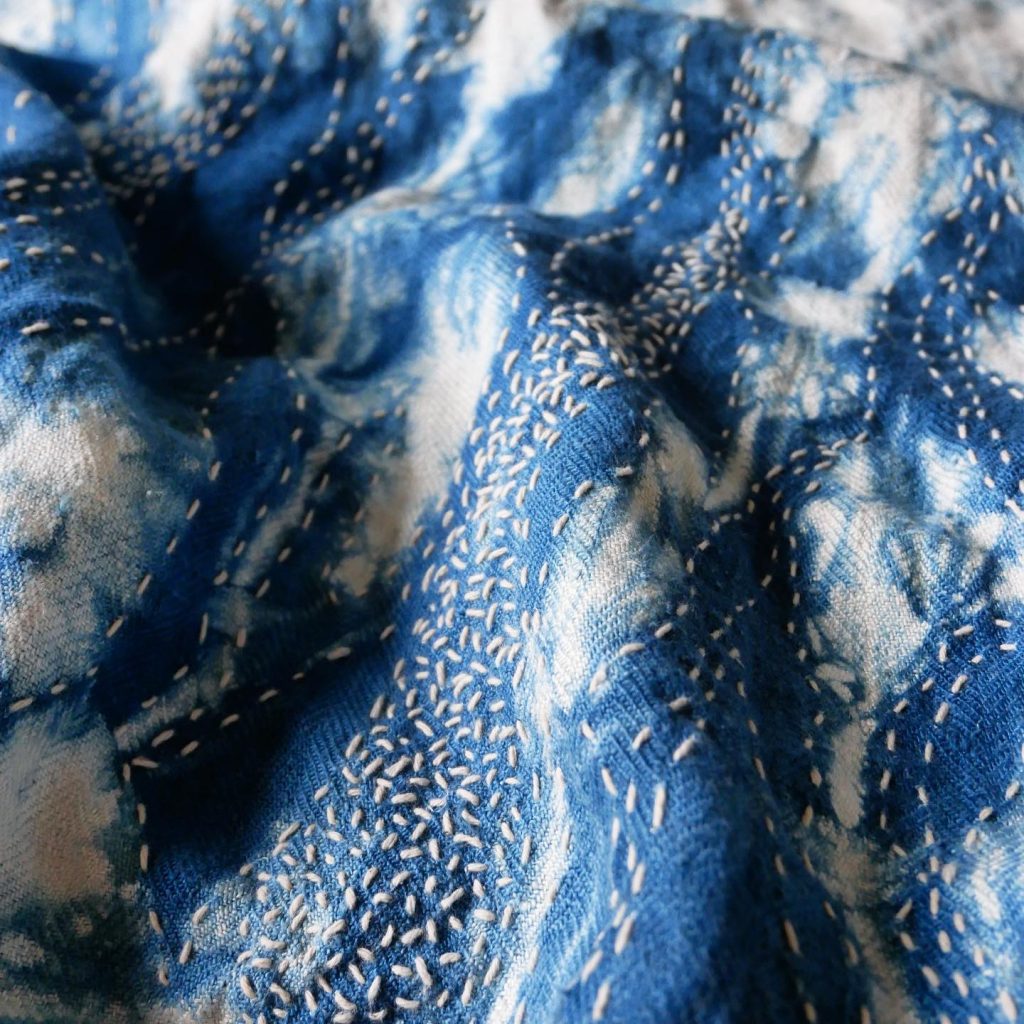
With his roots in Swedish textile territory
Growing up in Dalsjöfors outside Borås, Johan had a proud long history of Swedish textile industry around the corner. Amongst them Almedahls, that has been around since the 1800’s. This was the place Johan worked at during the summers.
Since then, textiles has been a part of Johan’s life in some way or another. Working as a designer, buyer, art director, arts craftsman or holding different courses. No wonder Dye For Indigo came to be. But what exactly is Dye For Indigo?
“Dye For Indigo is my reaction to the consumer society”
By shifting focus to the handicraft from the everyday consumerism Johan wants to showcase the joyous way to avoid getting worn out. Studies from the last few years even shows that arts and crafts have a positive effect on our memory.
In our fast moving, technical and digital society Johan thinks it’s vital not to lose our connection to working with our hands. Bit by bit new innovations takes over what we previously made by hand. And the world keeps on spinning faster, faster, faster.
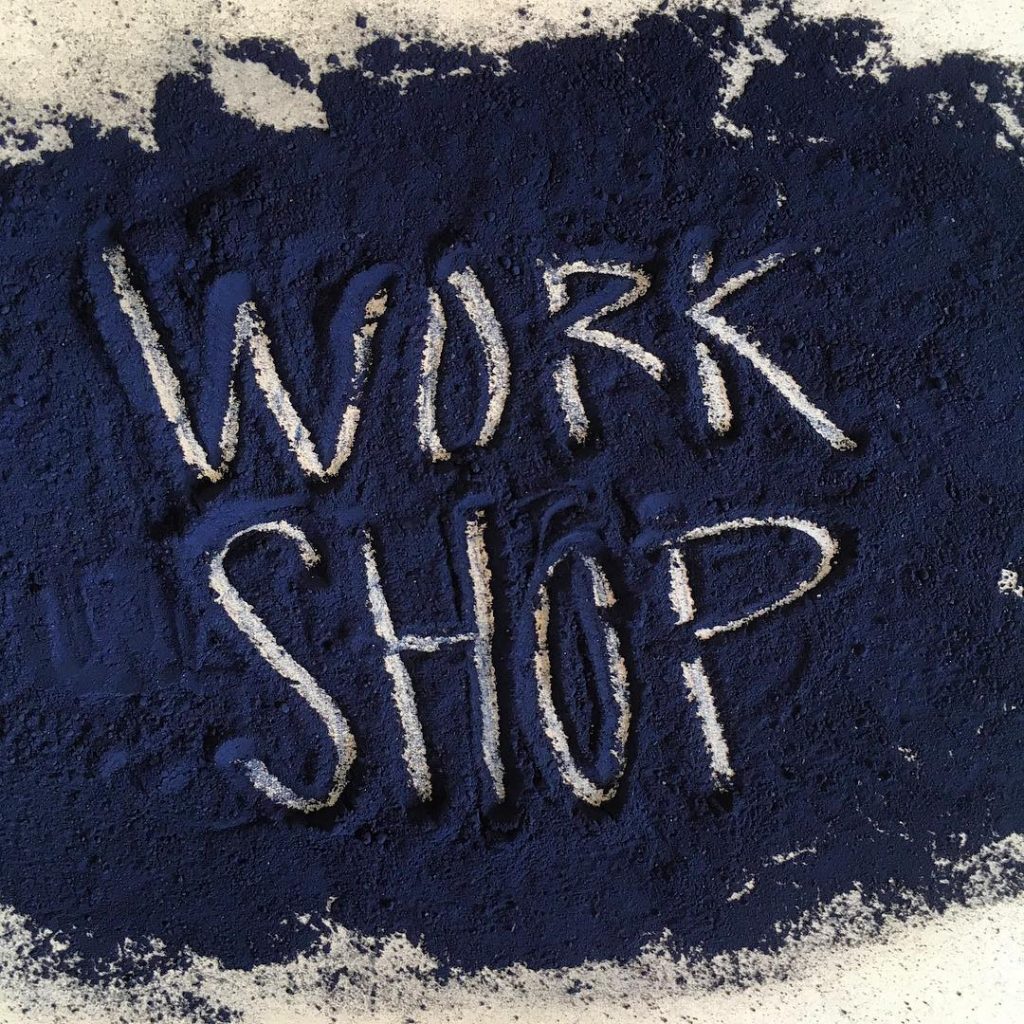
The start of Dye For Indigo
While working in the store Johan went deeper into the rabbit hole of textile craftsmanship. Here he found his answer to how he could express himself and his lifelong interest: indigo.
“I wanted to learn everything about indigo”
The history surrounding indigo is nothing short of astounding. From what we know indigo has been used for over 6000 years and across all continents. There’s over 750 species of indigo plants. To dye with, use as a medicinal herb, for trading.
It has played a big part throughout history with its many qualities: dirt repellent, antibacterial and flame retardant to name a few which made it very valuable for the working class.
As an example, during the Edo period (1603-1868) of Japan there were laws stating what style, fabrics and colors the different classes could wear. For the common people of Japan, simple indigo dyed clothing were some of what was allowed. As a result, the deep blue of indigo became an integral part of Japan’s history.
During the summer in 2015 Johan went to the Swedish island Öland to attend a course in textile dyeing. For over 50 years Capellagården have held courses in arts and craftsmanship. Here at Capellagården, the interest Johan held for indigo dyeing grew and reached new heights.
“Every vat of indigo I make is unique. It lives its own life”
Coming home to Gothenburg, Johan felt an itch to share his passion and knowledge. The idea was to keep using the store as an animated and local meeting place, but change its shape into an indigo studio and hold courses in indigo dyeing. There was a booming interest for the courses, the need to meet in a creative environment and make something by hand seemed huge. And it doesn’t stop. The workshops are always filled to the brim with participants.
The opportunity of trying out natural indigo dyeing and shibori have piqued the people of Gothenburg’s interest. Visits from several textile companies and collaboration projects keeps Johan busy.
But the success wasn’t a given. To properly put his mind to it Johan had to take a leap of faith and work less hours at his regular job. Something that obviously comes with a feeling of uncertainty at first. Thankfully it all played out well.
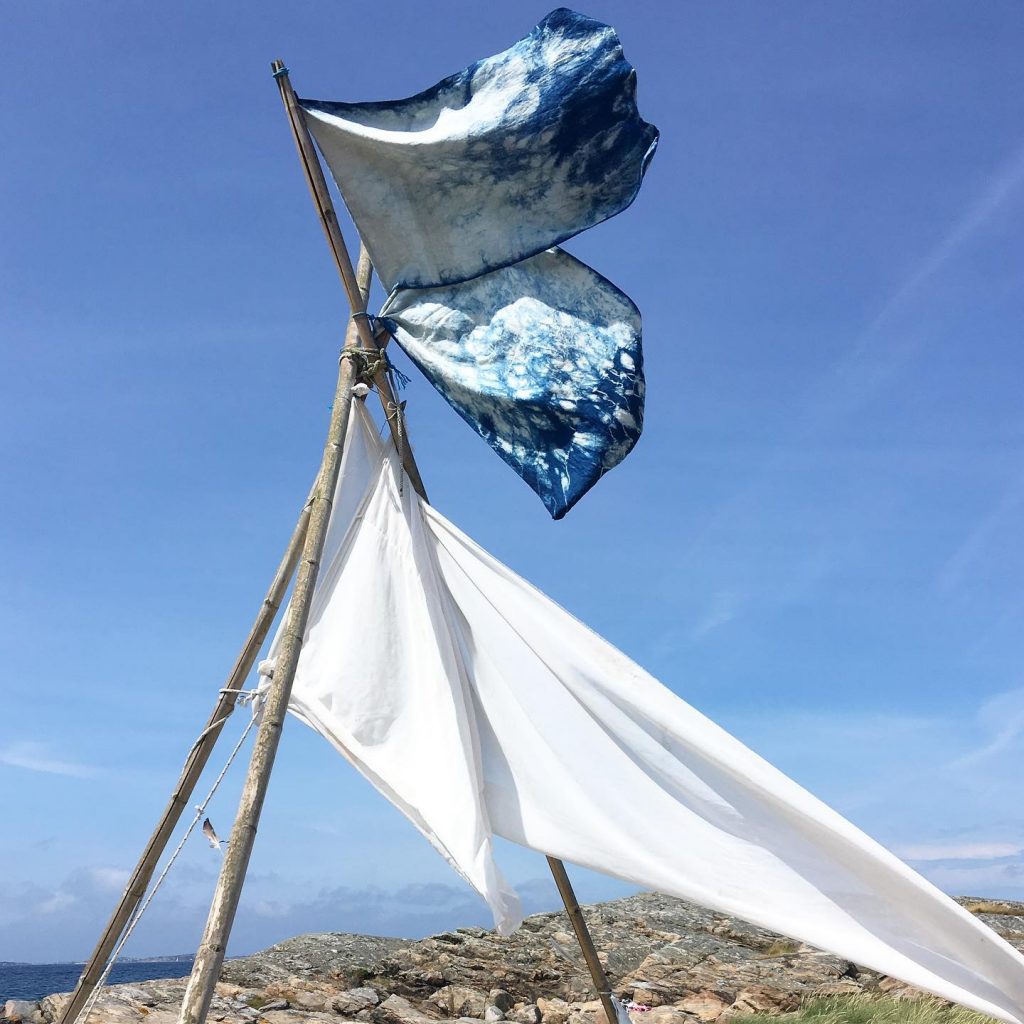
What’s the trick?
According to Johan, a huge part of succeeding with his voyage into the crafts scene was pushing himself early on. Throwing himself head first into the workshops and running them taught him plenty.
“Indigo and the different techniques is my big passion. I’m sure it shows during the courses, haha”
Having a distinct profile, being personal and daring to give a piece of himself has been key.
Dyeing in itself isn’t an easy task either. You have to be thorough and methodical. In other words, something that is pretty far from what we’re used to these days. Instead of rushing ahead, let it take its time and focus.
Treat the dyeing with care, it’s not something that you can hit home doing half arsed.
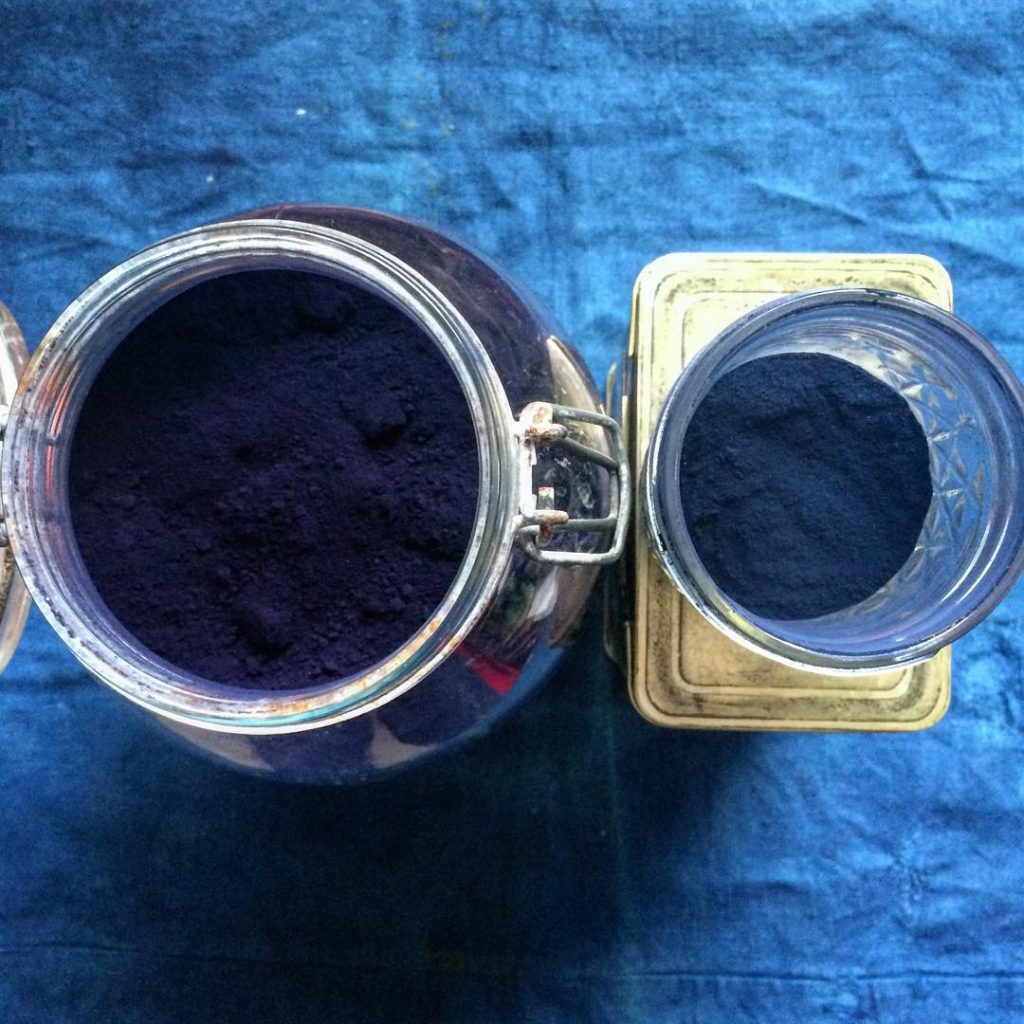
Once Johan was trying his hand at a technique called Katazome. If you’re not familiar with Katazome, it is a technique where you use rice paste to cover up the areas you don’t want to take up the indigo dye, creating a pattern.
“I found a traditional recipe that took hours to prepare. When I was dyeing the fabric, all the rice paste dissolved and disappeared down into the vat. I rushed it and the paste hadn’t dried yet. Doing it all over the next day, taking it slowly and methodical, it turned out great.”
Johan’s tips for indigo inspiration on Instagram
- instagram.com/buaisou_i
- instagram.com/lindzeanne/
- instagram.com/srithreads/
- instagram.com/srithreads/
- instagram.com/oldindustrial/
- instagram.com/sashi.co
- instagram.com/yesgraham
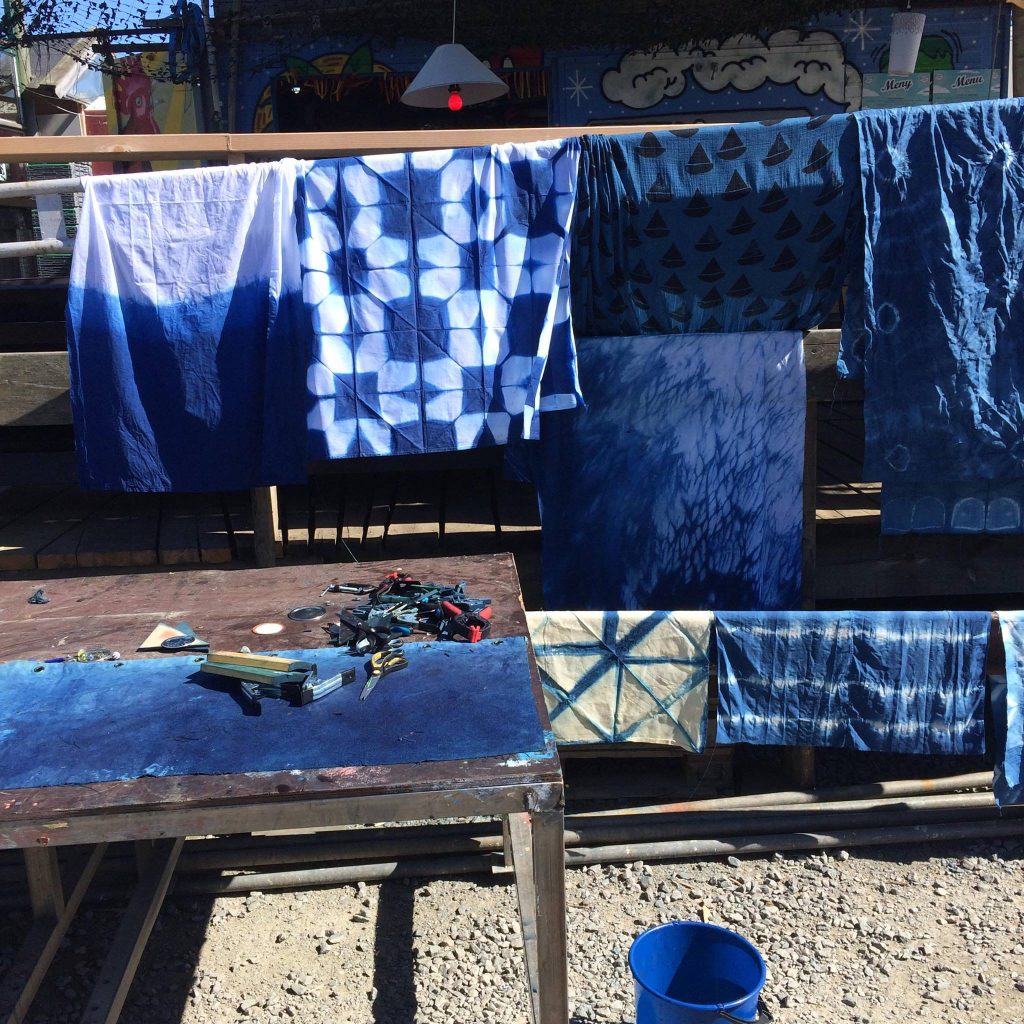
Shibori makes it shine
During Johan’s courses you don’t only get to try your hand at dyeing. Part of the fun (and maybe the most fun?) is having a go at shibori – an ancient dye resist technique from Japan. From what we know shibori have been used for almost 1200 years in Japan to make beautiful patterns.
When I asked Johan about what he finds the most intriguing about shibori he gave me a very fitting answer:
What really makes shibori interesting for Johan is how there’s so many techniques and ways of doing it. Everyone can do it and sometimes the easiest technique provides the greatest result. That is to say: you cannot fail.
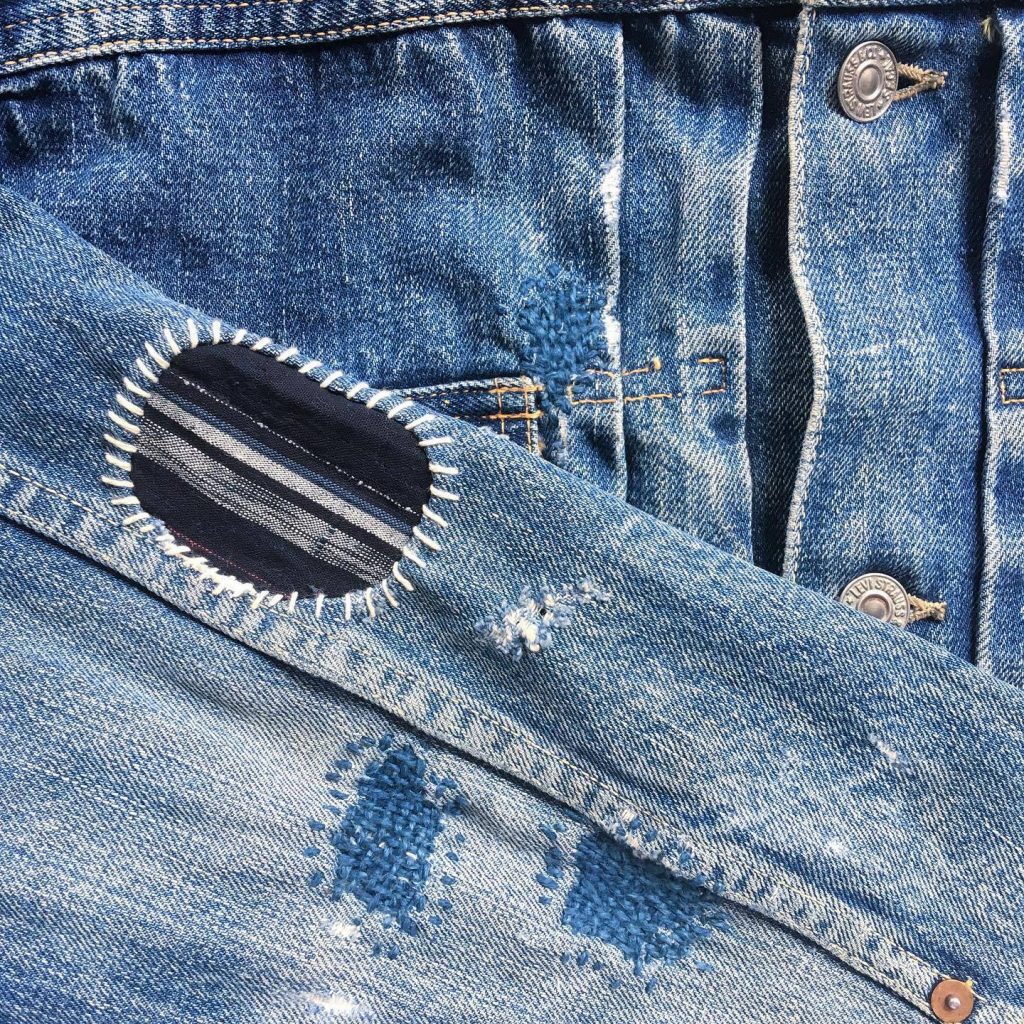
Mending with sashiko
It might not come as a surprise, a creative soul like Johan doesn’t stop at indigo dyeing and shibori. After that another idea popped up in his head and the mending workshops using sashiko was born.
Just like shibori, sashiko stems from Japan. Sashiko is a form of decorative reinforcement stitching that has been around since the 1600’s. The embroidery technique was used to strengthen the clothes. Worn out clothes were pieced together to make new garments by using simple running stitches in different patterns.
Back then it was born from a practical need. But now Johan is using it to further push his idea of sustainability and the joy of using your hands.
Perhaps you remember my vintage Levi’s 507XX? Johan was kind enough to mend it for me with antiques Japanese fabrics and sashiko embroidery. Turned out pretty neat, eh?
Want to learn more about indigo dyeing?
Interested in learning more about indigo dyeing? Maybe even try it yourself? Finding the right ingredients might be a bit tricky but here’s Johans best tips to get started:
- attend a course!
- there are plenty of blogs to devour
- Google is your friend
- Youtube is also your friend
- read some of the many book on the subject
If you want to attend a course with Johan, keep an eye out on @dyeforindigo where he posts upcoming dates. And lots of gorgeous indigo dyed photos of course!

What’s next for Dye for Indigo?
Today Johan is working part time with his indigo dyed business. Meanwhile, the workshops keep on running and commissions are rolling in from exciting partners.
In the midst of it all Johan leaves for Japan in a few weeks time. Going to browse vintage shops in Tokyo? Nah, it’s an indigo dyeing trip of course! During the trip Johan will be bouncing across Japan, attending dyeing workshops and deepening his knowledge about shibori. After a trip like that, it will be very interesting to see how much he has grown.
All the fun stuff isn’t happening in Japan though. Back home in Gothenburg there are a couple of big projects coming up in the following months. Challenging in more than one way, according to Johan. Very secretive so I guess we’ll just have to wait and see what’s in store!
